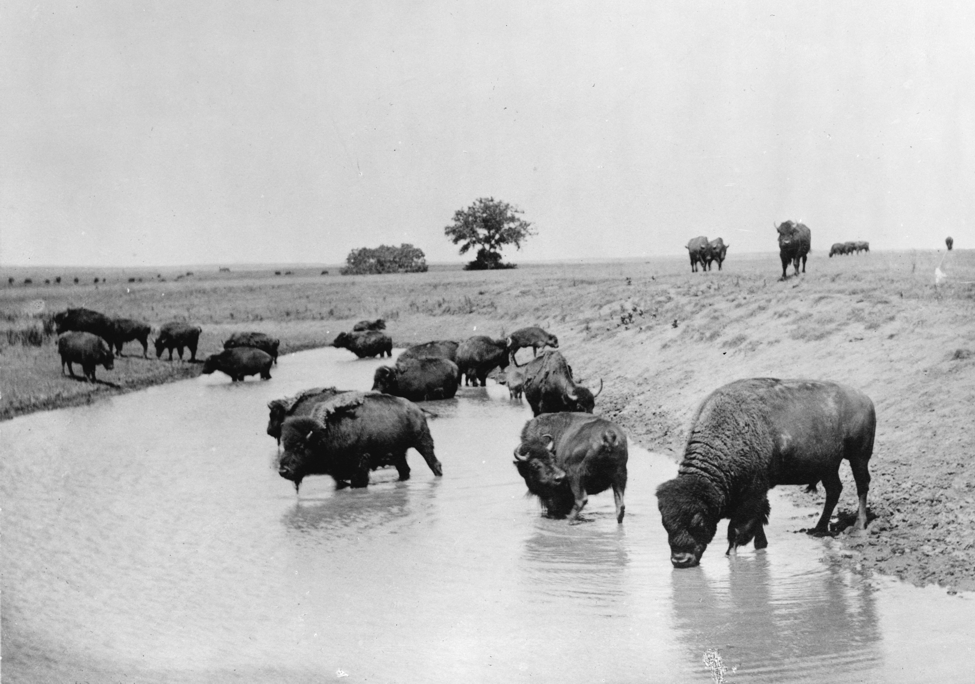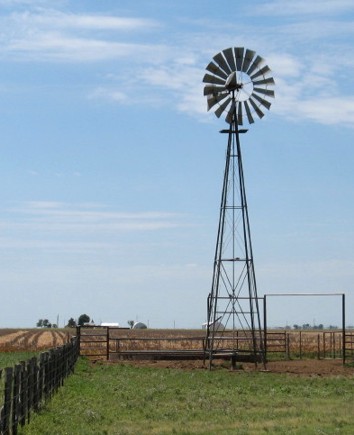|
Where are the Great Plains?
The Great Plains cover parts of ten states in the western part of the country. It stretches all the way from Texas to Montana and up into Canada - totaling over half a million square miles. The Rocky Mountains are just to the west of the Great Plains. |
|
A flat, dry land with low rainfall
Low rainfall - typically less than 20 inches a year - makes it a dry area. There are not many trees except along rivers and creeks. Windmills that pump water from wells are still common sights even on modern farms. |
|
Grass covered
The Great Plains originally were covered with tall prairie grass. Today areas that are not planted with farm crops like wheat are usually covered with a variety of low growing grassy plants. |
|
Once upon a time: the wild buffalo
The Great Plains once supported enormous wild buffalo herds, which could survive in the dry conditions. The arrival of settlers on the plains led to the destruction of much of the buffalo population after about 1870. They were hunted mainly for their hides, which were turned into leather for shoes and other products. |

|
Native Americans - the Indians
Dozens of Native American tribes also thrived on the Great Plains long before American settlers arrived in the mid-1800s. Some of the best known groups include the Cheyenne, the Comanche, and the Sioux Indians. Most were nomadic tribes, which means they followed the buffalo herds across the land. The buffalo were a source of food, and buffalo hides were used by Indians for clothing and tents. |
|
Dust storms
High winds can stir up dust storms on the Great Plains, especially where there are drought conditions from periods of no rain. This scene is from Nebraska during the terrible drought of the 1930s, when much of the area was called the Dust Bowl. Millions of tons of topsoil were blown away, causing severe erosion. |

|
The Great Plains today
Today large farms and cattle ranches cover much of the Great Plains. In fact, it is some of the best farmland in the world. Wheat is an important crop, because wheat can grow well even without much rainfall. Large areas of the Great Plains, like this land in Texas, are also used for grazing cattle. |
|
Something new on the Great Plains
Winds that blow across the Great Plains are now being used to turn the blades of electricity generating windmills. Often these gigantic windmills are built right on farmland. The farmers can still grow their crops, and they are paid money by the electric company for the use of their land. |
Here is a summary of key facts about
the Great Plains:
|
|
Looking deeper:
Animals of the Great Plains Everyone has seen photos of buffalo herds grazing on the Great Plains. Are there any other animals that live in that area? Yes! Even though much of the land is now farmed, many wild animal species remain. YouTube is a video sharing site with interesting short videos on every topic imaginable. Here's one example with stunning photos of the animals and plants of the Great Plains. Be sure to click the icon on the playback screen to show it in full screen size. There are many other interesting videos about this part of the country that you can find by searching within YouTube for the term Great Plains. |
 |
Color photos and the maps are by David Burns.
Black and white photos are from the Library of Congress.
Some have been edited or resized for this page.
|
Copyright Notice
Copyright 2009, 2016 by David Burns. All rights reserved. As a guide to the Virginia Standards of Learning, some pages necessarily include phrases or sentences from that document, which is available online from the Virginia Department of Education. The author's copyright extends to the original text and graphics, unique design and layout, and related material. |